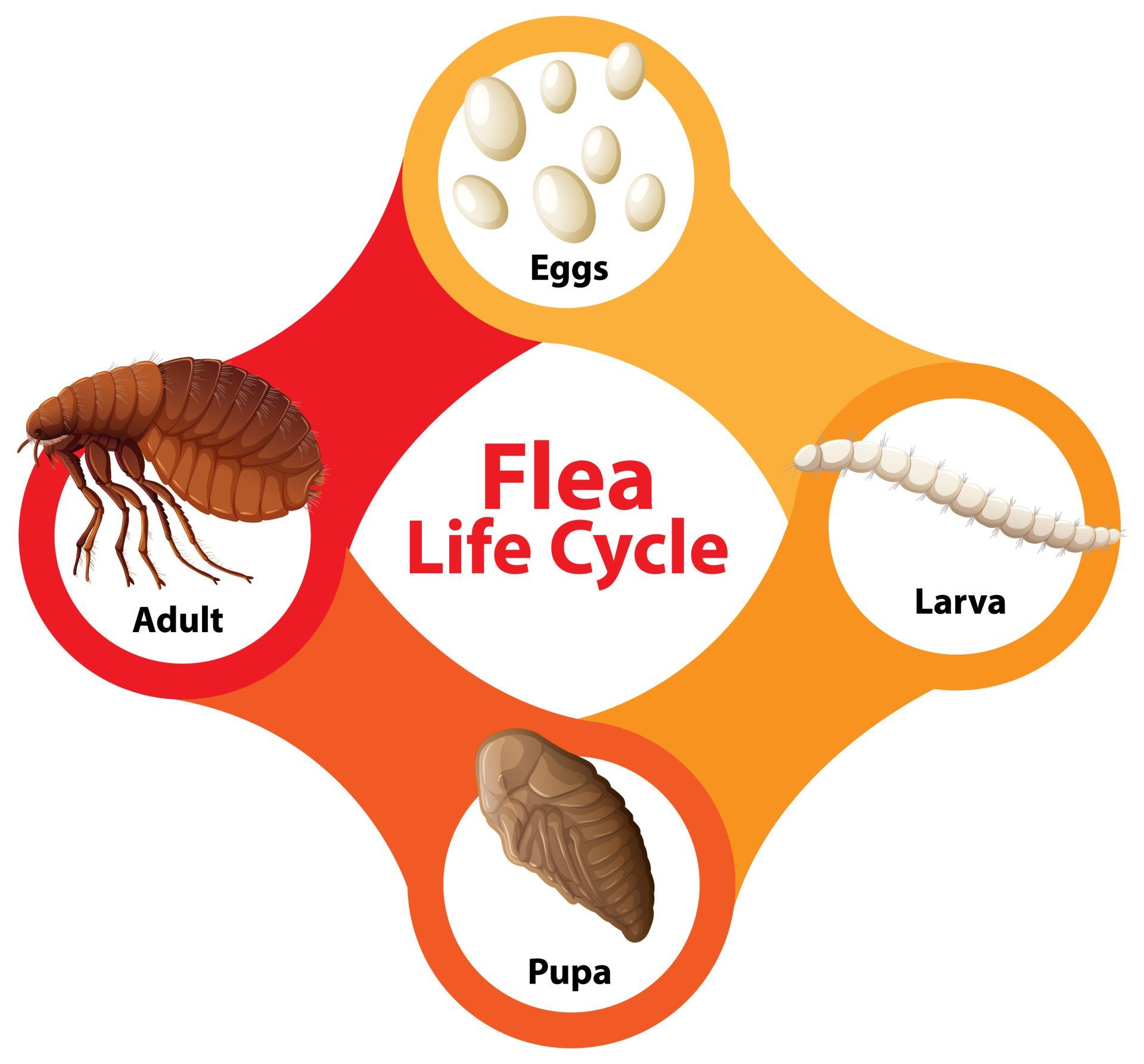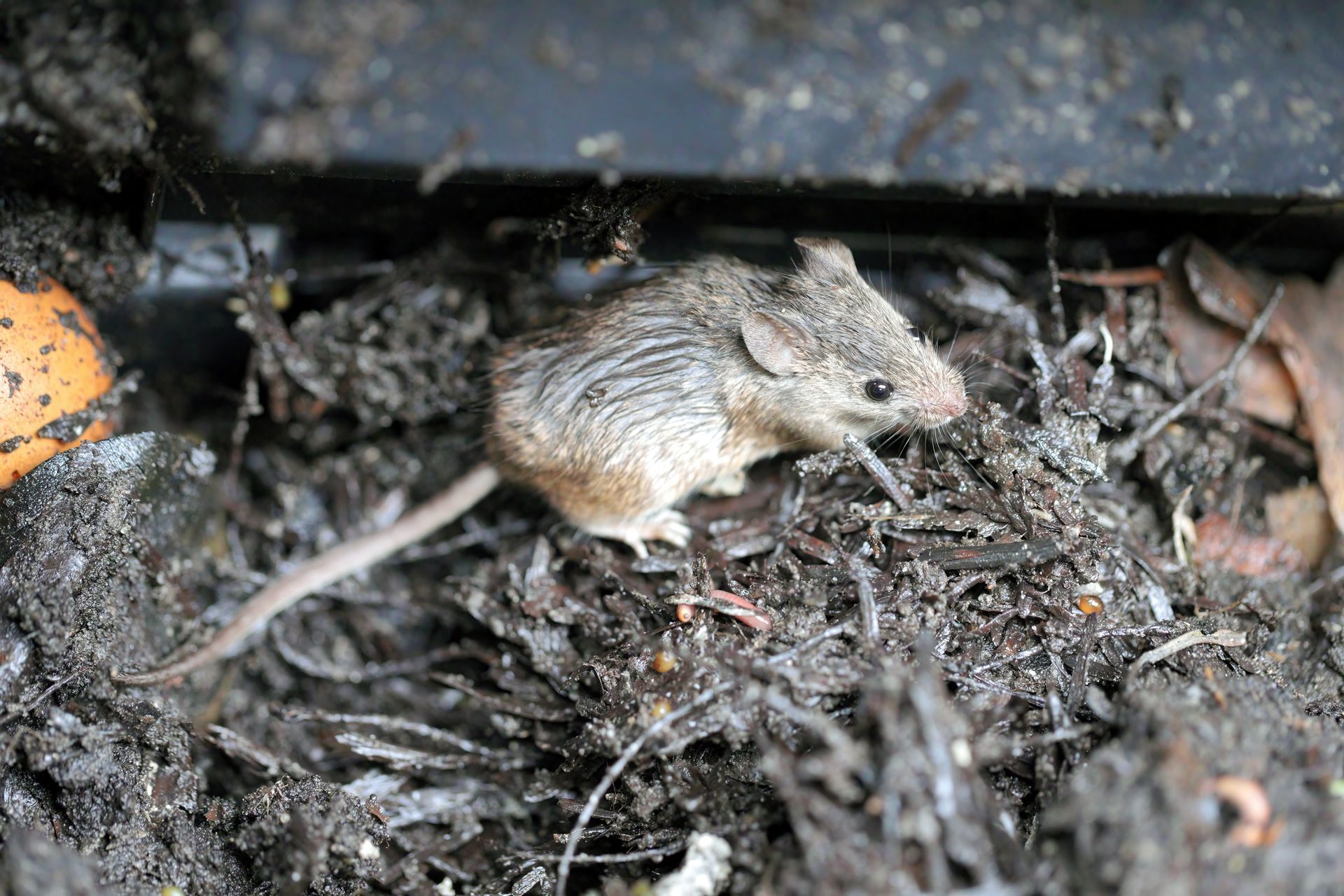Flea Life Cycle
Understanding the Flea Life Cycle
A flea will develop through several stages of their life cycle and understanding how to treat each stage is critical to ensuring success when fighting off a flea infestation. Fleas have four stages of development, which can last between a couple weeks to several months. The time of development usually depends on environmental conditions with optimal conditions being between 70 – 85 degrees F with 70% humidity. In optimal conditions, a fleas can mature relatively quickly which can cause an infestation to explode in a short period. After reaching adulthood, fleas can lay eggs and will live between a couple weeks to almost 8 months when there are abundant food resources.
Life Span of a Flea
The flea life span largely depends on resource availability and environmental conditions. If we count the developmental stages in addition to adulthood, the flea life expectancy can be several months. This factors in the couple months it may take young flea larvae to develop and then another few months that a flea can survive as an adult.
Flea Life Cycle Stages

Flea Egg
A flea’s life stages begins when a mature female flea begins laying eggs in clusters of roughly 20 - 40 eggs after a blood meal. Similar to mosquitoes and other bloodsucking pests, fleas require certain proteins found in the blood of their host to produce viable eggs. These flea eggs take between 2 – 14 days to develop and will hatch when conditions are right. If the conditions are too cold and dry, the eggs can take closer to 14 days to hatch but if the temperature and humidity are optimal then the eggs will hatch quickly. These eggs are extremely small, white orbs that are smaller than a grain of sand and barely visible to the naked eye. They are typically laid in the fur of their host but are not secured at all, so they are often shaken loose where they will be deposited on the ground. This means that if fleas are already on your pet and your pet has indoor access, there is a very good chance that your pet is shedding flea eggs all over your home and into your carpet. Due to the nature of the host animal, the highest concentration of flea eggs tends to be around the pet’s bedding or wherever it typically sleeps. Vacuuming around where pets sleep is the best way to ensure that flea eggs are collected but it is important to discard the vacuum contents to ensure that the eggs are not able to hatch inside.
Flea Larvae
Once fleas hatch from eggs, larvae emerge. As they develop, flea larvae can grow up to 5 mm long. These larvae are legless, almost transparent, worm looking creatures that develop over 5 – 20 days from hatching. Fleas are negatively phototactic during the larval stage which means that they will avoid light and attempt to move deeper into the carpet or fur in which they hatch. Since they are unable to feed on blood meals yet, flea larvae will search out organic materials like dead skin, food, and the waste of other bugs that will sustain them. Their preferred diet consists of “flea dirt” which is the dried excrement of mature adult fleas. This waste is essentially predigested blood from another host, so it is easy for the flea larvae to consume. Since fleas will typically be concentrated on pets and around a pet’s bedding, this is where larvae will most likely find a consistent source of food. Treating around this area with growth regulators and pesticide dusts is recommended to kill off any flea larvae before they develop into pupae.
Flea Pupae
Once flea larvae are ready, they will eventually move into the pupal stage where they will spin themselves into a cocoon. This cocoon will protect the larvae as they develop an exoskeleton and the different parts that identify an adult flea. This stage typically lasts from several days to several weeks but if conditions are not right, they can lay dormant for up to a year. During this time, the cocoon can remain safely embedded in the carpet or fur due to the pupal cocoon being sticky. This makes it difficult to vacuum up the cocoons like the previous flea stages. Given the right conditions for development, the pupal stage will end, and an adult flea will emerge once the cocoon is disturbed by the movement of a potential host. Other indicators like an increase in CO2 being released or the presence of body heat will also trigger fleas to emerge from their pupal cocoon.
Adult Fleas
Adult fleas will emerge from their cocoons hungry for a meal. These mature fleas will immediately start looking for their host and will try to feed as soon as possible. As soon as an adult female flea feeds, she will start the reproductive cycle and lay her first cluster of egg, restarting the flea life cycle. This typically occurs within the first 48 hours of an adult flea emerging from their cocoon. Adult fleas are very small, thin, oval insects with 6 legs. Out of those 6 legs, there is a pair of hind legs that allow fleas to jump incredible distances. This allows them to leap onto the legs of a passing host. Normally the host will be a household pet because the fur coat allows the flea to stay hidden and attached to its host. Adult fleas will nest on a pet’s back and neck where they are able to escape scratching. In these instances, adult fleas will need to be treated with flea medication that uses pesticides to kill off any existing flea population. If an adult flea lands on and bites a human, it tends to be on the ankles and legs. That being said, humans clean themselves regularly and are not hairy enough for fleas to thrive on.
How to Stop the Flea Life Cycle
Knowing how to treat fleas in the different stages of their life cycle is critical when fighting off a flea infestation. Using dusts designed to dry out flea eggs and larvae is an effective treatment option that disrupts the early stages of the flea life cycle. Be sure to regularly and thoroughly vacuum afterwards to capture any remaining flea eggs and larvae. After vacuuming, the contents of the vacuum should be discarded immediately to prevent fleas from escaping the vacuum cleaner. Also, be sure to wash pet bedding with hot water to exterminate any remaining flea eggs and larvae that may have not been collected from the carpet. Flea pupae are a little more difficult to treat since they are embedded deep in the carpet fibers. That being said, conditions like humidity can be increased to shorten the time fleas spend in their cocoons. While this may seem counter intuitive, this allows for adult flea treatment to be implemented in a short time rather than finding out that fleas survived the treatment process by hiding in their cocoons. Once the fleas have emerged from their cocoons, the adults can be treated with flea medication that can be applied to your pets. With treatment applied, adult fleas that are on your pets will die and any remaining fleas that don’t have a source of food should perish in a week or two. On going monitoring is recommended by using sticky traps that can be purchased. These traps help attract fleas so homeowners can know if fleas return.
Contact EcoGuard Pest Management to Help Combat Flea Infestations
If other treatment attempts have failed, it may be time to enlist the help of professionals who can effectively exterminate your flea problem. Call EcoGuard Pest Management today to schedule an inspection with a licensed and trained flea control expert. Our team has years of experience identifying problematic areas that need to be treated to ensure that fleas are successfully eradicated on your property.

















